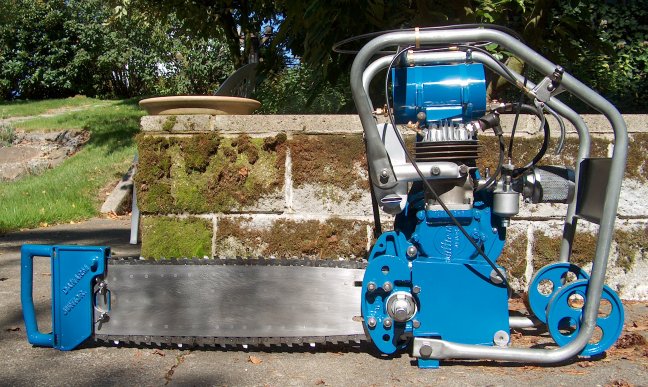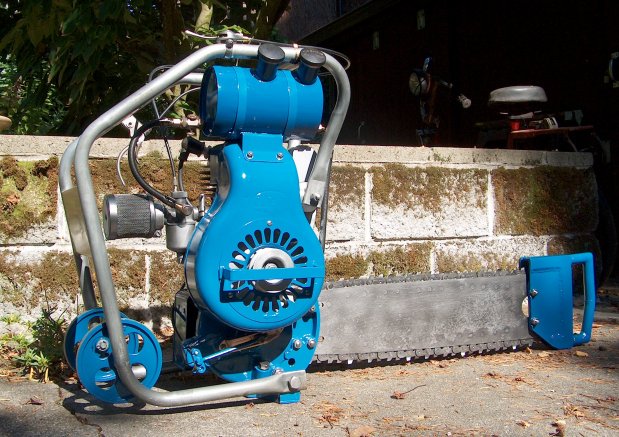As a general statement, development of chain saws light enough to be operated by one man (or woman) was influenced by the military of the various nations involved in World War II. Aluminum and magnesium supplies were closely controlled for military purposes. Most countries had chain saws for use by their armies, either manufactured in their own factories or imported from allies. These saws were all two man types.
By 1944 the needs of the military had been met and several manufacturers of chain saws began experimenting with lighter units.
The T.H.&J. Daniels Co. of Stroud, England introduced their "DANARM Junior MkI" in 1944. The saw may have been available earlier through controlled distribution as it was initially meant for workers in the "land army" which in cluded many women who worked on the farms replacing men who enlisted in the various arms of the military. The overall weight was 24.9 kg (55 lbs.) and there were two wheels so it could be pulled along without having to be actually carried. The overall mechanism was derived from a Villiers motor scooter power unit. It was a 98 ccm (5.98 cu. in.) motor, that had a 50 mm bore and 50 mm stroke with reed valve intake. The magneto was Villiers flywheel type and the carburetor was also Villiers float type that had a swivel arrangement so it could be rotated to allow for felling a tree. There were parts from the motor scooter transmission adapted to utilize the roller chain reduction and manual clutch. Chain oiling was accomplished with a manual pump. It was cumbersome and clumsy but it worked.


Restored Danarm Junior MkI by Marshall Trover |